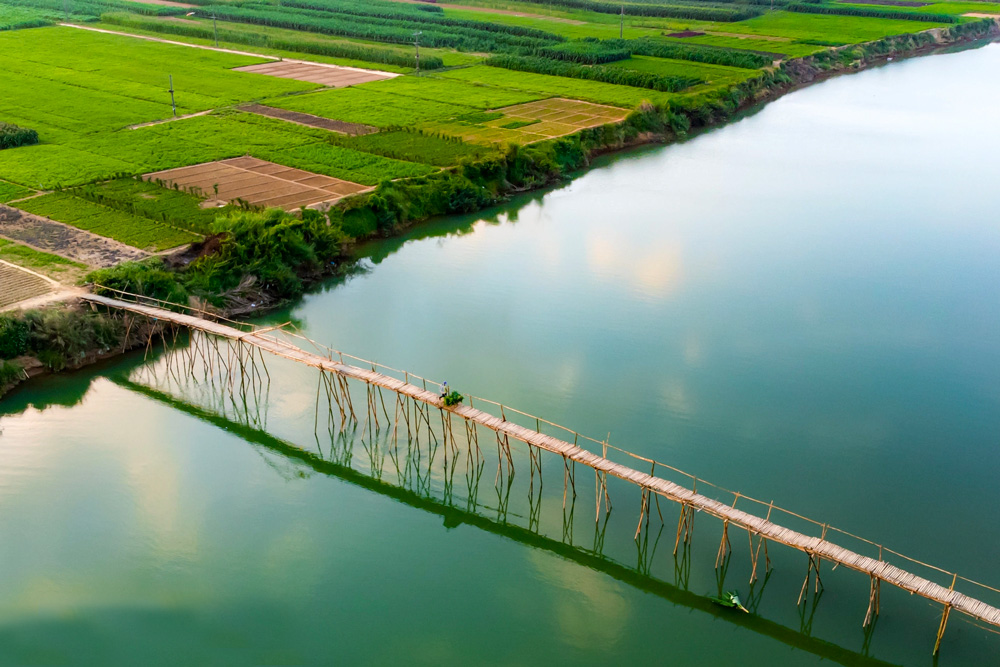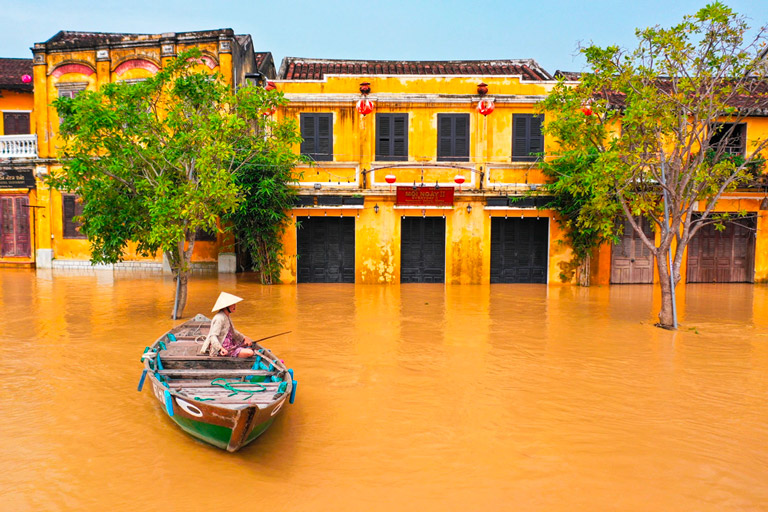Discover the most beautiful bamboo bridge in Hoi An
In Hoi An, you can visit the Japanese Covered Bridge, but there are also other more picturesque bridges like the bamboo bridge that I present to you in this article.
About 12 km west of the ancient city of Hoi An, the Cam Dong Bamboo Bridge (in Cam Dong village, Dien Ban city) is one of the last remaining bamboo bridges in the region and is a favorite spot for photographers.
Most of the bamboo bridges in Hoi An are now either made of concrete or have been removed.
This is probably the rare surviving bamboo bridge in the region. Day after day, the villagers of Cam Dong cross the bridge to the Go Dinh alluvial plain on the riverside to plant, plow, and harvest.
The Go Dinh alluvial land has an area of nearly 90 hectares and is a key agricultural area of the commune.
Brief history of the Cam Dong Bridge

Years ago, the people of Cam Dong village wanted to go to the Go Dinh alluvial lands on the other side of the river to cultivate agriculture. At the time, farmers made the journey by boat, which was impractical.
After a while, feeling inconvenienced by this situation, more than 300 households began to gather to build 2 bamboo bridges to facilitate agriculture.
Bridge architecture

The shape of the bridge is quite unique, assembled from over 100 old bamboo poles. It is only 1m wide for a length of about 120m.
The center of the bamboo bridge is located quite high above the water, with a single handrail, so it looks very precarious from afar, especially when there are a lot of people passing through.

Each year, during the floods, the bamboo bridge is broken, sometimes almost completely, sometimes partially damaged. After the flood, people gather to collect money to buy materials and bamboo to build a new bamboo bridge.
Rainy Season
If you go there during the rainy season from October to November or even December, the bridge is disassembled to prevent damage. This means you won’t see it.

The countryside is poor, unable to afford a sturdy bridge, although in 2021 there were discussions to build a concrete bridge, so the people here still diligently preserve the bridge with a “history” for decades to get around and earn a living.
Although the bamboo bridge is not sturdy, it is more practical and faster than taking a boat.

When the farmers bring in a harvest, they divide the harvest into several parts and make several round trips on the bridge. This avoids carrying too heavy a load on the bridge and damaging it.
What to do at the Hoi An Bamboo Bridge
One of the must-do things is of course taking a photo. This bridge is a place where many photographers and photography enthusiasts come to compose, especially in the morning or at sunset. It’s just magical.

One of the most interesting experiences here is to walk on it. The bridge is not wide (1m) and has only one handrail. When you meet a farmer with his wheelbarrow carrying his harvest, it’s quite folksy.
Apart from the bridge, you can visit the surroundings but the bridge is the must-see thing here.
Good to know
Remember that the bridge is used by farmers, so you, as a tourist, must respect the place.
If you go there, don’t block the traffic on the bridge when the farmers are passing.
Motorcycles are not allowed on the bridge.
How to get to the Hoi An Bamboo Bridge?

Currently, you just need to type “Cau Tre Cam Dong” in Google Maps and follow the information. It is located 12km from Hoi An.
When I first went there in 2015, it was not on Google Maps and it was particularly difficult to find.
It is a non-touristic bridge, so there was little information available, and it was thanks to a local contact that I was able to find it at the time.
My opinion
For some people who love rustic beauty in a rural setting, the Cam Dong Bamboo Bridge has become a destination for tourists coming to Hoi An.
You can see local life without the crowds of tourists.
It is an ideal stop on the way to the My Son Sanctuary for all photographers.








